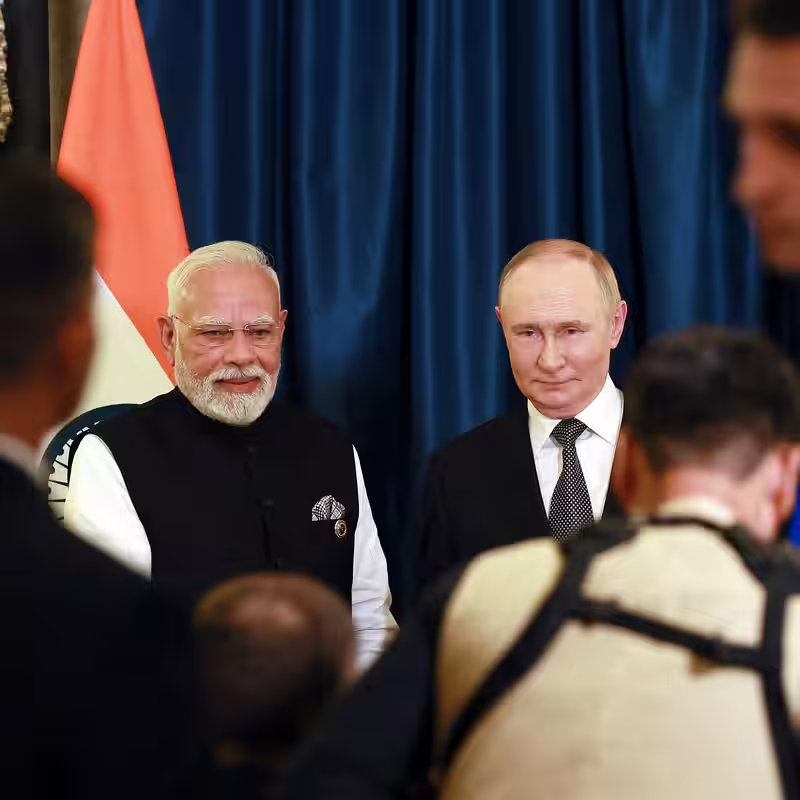Table of Contents
- Sanctions Hit Russian Oil Giants
- India’s Russian Oil Dependence
- Diplomatic Tensions Rise Between U.S. and India
- Market Reactions and Alternatives
- What Happens Next?
- Sources
Sanctions Hit Russian Oil Giants
On Wednesday, October 22, 2025, the U.S. Treasury Department rolled out a sweeping new round of sanctions targeting Russia’s two largest oil companies—Rosneft and Lukoil. The move marks a significant escalation in Washington’s efforts to choke off revenue streams funding Russia’s war in Ukraine.
These sanctions don’t just target the Russian firms directly—they also threaten any global entity doing business with them. That includes major Indian refiners like Reliance Industries and Nayara Energy, which together account for a large chunk of India’s Russian crude imports.
India’s Russian Oil Dependence
Since Russia’s invasion of Ukraine in 2022, India has dramatically shifted its oil sourcing strategy. Once a minor supplier, Russia quickly became India’s top crude provider—shipping over 1.8 million barrels per day as recently as October 2025, according to data from market intelligence firm Kpler.
Indian refiners were drawn to steep discounts on Russian crude, which helped cut fuel costs and boost refining margins. But those discounts have narrowed as logistics improved and global demand stabilized.
“The economic benefits of buying Russian oil are really not that significant anymore,” said Amitendu Palit, senior research fellow at the National University of Singapore.
Diplomatic Tensions Rise Between U.S. and India
The oil trade has become a flashpoint in U.S.-India relations under the Trump administration. In August 2025, President Donald Trump imposed a 25% tariff on all Indian goods, accusing New Delhi of undermining U.S. efforts to isolate Russia.
Indian Prime Minister Narendra Modi, known for his strongman image, has resisted external pressure on energy policy. Publicly, he’s offered little more than vague acknowledgments of discussions with Trump—mentioning only Diwali greetings and counterterrorism cooperation.
Still, the latest sanctions may force a shift—not through diplomacy, but through market mechanics. By making it legally and financially risky for Indian firms to deal with Rosneft or Lukoil, Washington has effectively outsourced the decision to corporate boardrooms.
Market Reactions and Alternatives
Reliance Industries, India’s largest private refiner and a major buyer of Russian crude, confirmed it is undergoing a “recalibration” of its oil sourcing strategy. Nayara Energy, the second-largest importer, has remained silent—but its position is especially precarious: Rosneft owns a significant stake in the company.
If U.S. authorities determine that Rosneft holds majority control, Nayara itself could face direct sanctions. Already, the European Union has blocked Nayara’s fuel exports, forcing India to absorb surplus domestic supply.
Analysts predict a swift pivot back to traditional suppliers. “India would scramble for prompt cargoes to fill the supply gap,” said Muyu Xu, senior crude oil analyst at Kpler. “Exposure to Middle Eastern supplies would increase—going back to the old times,” added Duttatreya Das, former official at an Indian national oil company.
What Happens Next?
While political posturing continues, the real action is now in the boardrooms and trading desks of Mumbai and Singapore. The U.S. sanctions may finally achieve what tariffs and threats could not: a structural break in India’s Russian oil pipeline.
For India, the short-term pain of supply disruption may be outweighed by the long-term prize—a broader trade deal with the United States. And for Washington, cutting off one of Russia’s last major oil markets could deliver a decisive blow to Moscow’s wartime economy.




